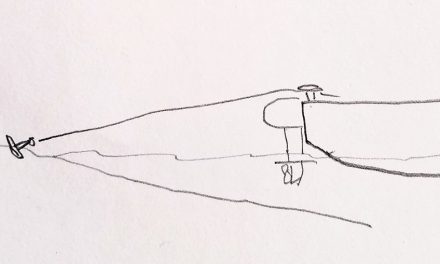
Maybe you’ve repaired a sail? Perhaps even while underway. But have you repaired a sail while aloft in a bosun’s chair? Not just slapped sticky-back tape on the sail, but sewed it with needle and thread? That’s one of the experiences Brian Hancock has to draw on in Maximum Sail Power.
Brian sets up his book around a hypothetical visit to the sailmaker. The first chapter is a little uneven. He says “old-fashioned service is gone, unless of course you’re spending upward of $50,000.” I’d take issue with this. There are many small lofts that – -while carrying brand names such as UK, North etc. — are really one-man gangs. These folks earn their money via commission and will provide wonderful in-person service.
There are two other strong points made in his first chapter. One is that boat information is extremely important if you’re having a sail built. As someone who works in the industry (Torresen Marine), I can say that the more information you can provide about your boat’s model, engine model, and so on, the better things will go for you.
Brian also makes the point that “an educated customer is a sailmaker’s best customer.” Hear, hear! Will reading this book make you an educated sail buyer? Yes, and in several ways. One item you can learn about is the cloth that sails are made of. I’ve read many an article and book on just how to adjust trim but few that tell as much about sailcloth as this book does.
Individual fabrics, such as Dacron, Kevlar, and PBO are covered. How modern fabrics are made into sailcloth is also covered. He discusses several types of weaving and laminating — even Cuben fiber, which is literally a trade secret.
Brian also utilizes case studies. One example has to do with high-latitude sailing, the other with the Cape to Rio race. I don’t know how helpful these will be to the average sailor.
The book is thorough and covers all aspects of the sail wardrobe. There’s an entire chapter on storm sails. One point well made is that you should get your trysail and storm jib out of the bag and fit them. It is much easier to do this before the storm!
The working staysail gets a lot of positive ink. While this can be a useful sail, I’m not sure how this will benefit of a lot of the sailors I know. They tend toward the use of a roller-furling headsail. I don’t see many folks who are primarily daysailors adding a working staysail to their Catalina 30, for example. Practical advice, perhaps, but for a limited audience.
There’s even a chapter on repairs and repair kits. While using the book as an on-the-job reference, I found that it lacks information on sail cleaning. This is a popular question from my customers.
Maximum Sail Power may not raise to the level of masterpiece, but it does fill a bill as a reference work that’s better written and more interesting than most.
Maximum Sail Power by Brian Hancock (Nomad Press, 2003; 353 pages)




